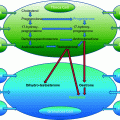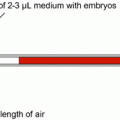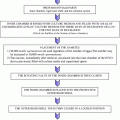Characteristics from 1187 pregnancies
Singleton pregnancies (n = 960)
Twin gestation pregnancies (n = 221)
Triplet gestation pregnancies (n = 5)
Quadruplet gestation pregnancies (n = 1)
Mean gestational age at delivery (weeks + days)
37 + 4
36 + 5
35 + 2
29 + 0
No. of deliveries at >37 weeks (%)
855 (89)
60 (27)
0 (0)
0 (0)
No. of deliveries at 34–37 weeks (%)
82 (9)
132 (60)
5 (100)
0 (0)
No. of deliveries at <34 weeks (%)
23 (2)
29 (13)
0 (0)
1 (100)
Total of 1421 newborns | Singleton newborns (n = 960) | Twin newborns (n = 442) | Triplet newborns (n = 15) | Quadruplet newborns (n = 4) |
|---|---|---|---|---|
Birthweight (mean ± SD) (g) | 2965 ± 532 | 2434 ± 365 | 1968 ± 472 | 1330 ± 84 |
No. of LBW (%) | 35 (4) | 59 (13) | 12 (80) | 0 (0) |
No. of VLBW (%) | 5 (1) | 12 (3) | 2 (13) | 4 (100) |
Median Apgar score at 1 min (interquartile range) | 9 (7–9) | 8 (7–9) | 8 (8–9) | – |
No. of Apgar score at 1 min less than 7 (%) | 133 (14) | 31 (14) | 0 (0) | – |
Median Apgar score at 5 min (interquartile range) | 10 (9–10) | 10 (9–10) | 8 (8–9) | – |
No. of Apgar score at 5 min less than 7 (%) | 25 (3) | 5 (2) | 0 (0) | – |
Incidence of congenital anomalies (%) | 15 (2) | 3 (1) | 0 (0) | 0 (0) |
Development of IVM Treatment: Natural Cycle IVF/M
PCOS is the most widespread endocrinological disorder among women of reproductive age as well as the most common cause of anovulatory infertility and has been shown to exist in approximately 10% of the general population [42]. As described above, IVM treatment was most likely applied to infertile women with PCOS as an option of infertility treatment, because this group of patients are very sensitive with exogenous gonadotropins for conventional (stimulated) IVF treatment cycle [43, 44]. Whether or not IVM treatment could be applied to women with normal ovaries, i.e., for women with regular menstrual cycles? Before answering this question, it should be clear that physiology of folliculogenesis in the ovaries. IVM treatment is offered as successful option to infertile women with PCOS, because there are many antral follicles in the ovaries in this group of patients.
In women, although only a single follicle usually grows to the pre-ovulatory stage and releases its oocyte for potential fertilization, there are many small follicles that also developed during the same follicular phase of the menstrual cycle. It seems that approximately 20 antral follicles are selected and developed during each menstrual cycle [45]. As mentioned in Chap. 2, it has been documented that two or three waves of ovarian follicular development in women during menstrual cycle were based on daily transvaginal ultrasonography, challenging that the traditional theory of a single cohort of antral follicles grows only during the follicular phase of the menstrual cycle [46, 47]. Animal model studies also supported these findings that oocyte quality and early embryonic developmental competence of immature oocyte following maturation in vitro are not detrimentally affected by the presence of the dominant follicle in the ovaries [48, 49].
It has been demonstrated in human that atresia does not occur in the non-dominant follicles even after the dominant follicle is selected in the ovary during folliculogenesis, because immature oocytes retrieved from non-dominant follicles have been successfully matured in vitro, fertilized, and have resulted in several pregnancies and healthy live births [50]. Therefore, one very attractive possibility for the enhancement of the success of natural cycle of IVF treatment is its combination with immature oocyte retrieval and IVM, namely natural cycle IVF/M. If the mature oocyte from the dominant follicle together with immature oocytes from the small follicles was collected as well, the chances of a pregnancy are greatly increased when we manage to mature these immature oocytes and produce several viable embryos. A study indicates that the clinical pregnancy rate can be reached to approximately 45% with per embryo transfer following natural cycle IVF/M in a selected group of patients [51, 52].
The literature reports for pregnancy rate per embryo transfer in natural cycle IVF varied as described in previous chapters. A number of problems arise in natural cycle IVF treatment alone, including an increased risk of empty retrieval during oocyte collection leading to cancellation of treatment cycle [53]. This disadvantage seems not in the case of the natural cycle IVF/M. It has been shown that more than a half of infertile women who came to infertility clinic for IVF treatment can be treated with natural cycle IVF/M or IVM alone when these treatments have been chosen primarily, and that natural cycle IVF/M is an efficient treatment, especially for women under age of 35 years [52, 53]. Therefore, it has been clearly demonstrated that natural cycle IVF/M is more efficient treatment than natural cycle IVF alone. This may be the future direction for infertility treatment with IVM technology.
Conclusion
Priming with FSH or hCG prior to immature oocyte retrieval improves oocyte maturation and pregnancy rates when the immature oocytes retrieved from women with PCOS. The size of follicles may be an important feature for the subsequent embryonic development, but the developmental competence of oocytes derived from the small antral follicles seems not to be adversely affected by the presence of a dominant follicle. Approximately, 5000 healthy infants have been born following immature oocyte retrieval and IVM. In general, the clinical pregnancy and implantation rates per ET have reached 35–45% and 10–15%, respectively, in women with PCOS. Therefore, as an option, IVM treatment can be offered to women infertility with PCOS. The combination of natural cycle IVF with immature oocyte retrieval followed by IVM is an attractive treatment for women with all types of infertility without recourse to ovarian stimulation with acceptable pregnancy rate.
References
1.
Pincus G, Enzmann EV. The comparative behavior of mammalian eggs in vivo and in vitro: I. The activation of ovarian eggs. J Exp Med. 1935;62:665–75.CrossRefPubMedPubMedCentral
3.
Pincus G, Saunders B. The comparative behaviours of mammalian eggs in vitro and in vivo. VI. The maturation of human ovarian ova. Anat Red 1939; 75: 537–45.
4.
5.
6.
Edwards RG. Maturation in vitro of mouse, sheep, cow, pig, rhesus monkey and human ovarian oocytes. Nature. 1965;208:349–51.CrossRefPubMed
Stay updated, free articles. Join our Telegram channel

Full access? Get Clinical Tree







